Why do the three major nutrients affect my figure?

McDonald's, chicken schnitzel, pearl milk tea... Our daily intake of food will provide body nutrients. These nutrients are converted into energy and calories after digestion, allowing the body to run, jump, slide mobile phones, and talk dry words... But you know what, Although most people have enough calories, some nutrients are not enough, just like I have land and a lot of cement, but I don't have enough bricks to build a house.
The ground, cement and bricks mentioned above are metaphors for the three major nutrients. We can ingest six types of nutrients from our diet, but today we will introduce the three most important ones: protein, carbohydrates and lipids.
protein
- Provides 4 calories per gram
- Function : Build new tissues, maintain acid-base balance and water balance in the body, help transport nutrients, form enzymes, hormones and antibodies, etc., regulate physiological functions, and maintain sufficient immunity of the human body.
- Effects of deficiency : Insufficient protein intake can cause growth retardation, underweight, easy fatigue, and weakened resistance
- The American College of Sports Medicine (American College of Sports Medicine) recommends a daily intake of 1.2-2.0 g/kg of body weight for adults who exercise, and 0.8 g/kg of body weight for general adults.
- Sources : Meat, eggs, milk, beans
carbohydrates (sugars)
- Provides 4 calories per gram
- Function : supply the energy needed by the body
- The impact of deficiency : The body will use protein as a source of energy, making it impossible for protein to promote the growth and development of the body and repair tissues. Therefore, carbohydrates can save protein consumption and allow protein to perform its most important functions. In the process of lipid oxidation, carbohydrates must also be involved in order for lipids to be completely oxidized, otherwise excessive ketone bodies will be produced, resulting in ketoacidosis. Glucose in sugar is the only source of energy for nerve cells, especially brain cells cannot lack glucose, otherwise it will affect the normal function of brain cells.
- The American College of Sports Medicine (American College of Sports Medicine) recommends that the intake of general adults is 20~30g per day, or 55% of total calories (general adults), up to 65% of total calories (athletes)
- Source : rice, pasta, potatoes, sweet potatoes, fruits, vegetables, etc.
Lipid
- Provides 9 calories per gram
- Function : Provide essential fatty acids necessary for growth and maintenance of skin health; vitamins A, D, E, and K are fat-soluble vitamins, which must be dissolved in fat to be absorbed and utilized; and polyunsaturated fatty acids in lipids are one of the components that constitute cell membranes one.
- Effects of deficiency : rough skin and thin stature; lack of essential fatty acids in lipids can cause growth retardation, reduced fertility, rough skin, and dermatitis.
- The American College of Sports Medicine recommends intakes of 20% and 35% of total daily calories
- Sources : Oils (animal and vegetable), butter, whole milk, meat, etc.
As mentioned above, each of the three major nutrients has its recommended intake. In particular, many people often mistakenly think that losing weight means not eating carbohydrates, but when the intake of carbohydrates is insufficient, protein will be consumed as a source of energy. In this way, how can there be enough muscle? What about the growth of nutrients? Therefore, if you want to have good-looking muscle lines, in addition to exercising well, balanced nutrition is also very important!
References
https://www.hpa.gov.tw/Pages/Detail.aspx?nodeid=544&pid=721
https://www.hpa.gov.tw/Pages/Detail.aspx?nodeid=544&pid=725&sid=721
Rebecca, A. et al , (2017). ACSM's Resources for the Personal Trainer 5th edition, LWW
Published on 2022/01/25 by Fatty Ali




